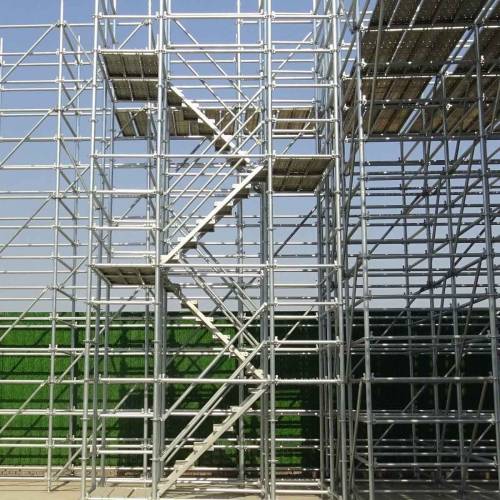Scaffolding is a temporary structure used in construction, maintenance, and repair work to provide safe access and working platforms for workers at height. It ensures safety, stability, and efficiency when working on buildings, bridges, towers, or other large structures.
Key Purposes of Scaffolding
-
Safety – Provides a secure platform for workers and their tools.
-
Accessibility – Allows workers to reach difficult or high areas easily.
-
Efficiency – Enables multiple workers to operate at the same time on different sections of a structure.
-
Support – Carries the weight of materials, tools, and workers.
Types of Scaffolding
-
Tube & Coupler Scaffolding – Traditional system made of steel/aluminum tubes connected with clamps.
-
Frame Scaffolding – Pre-fabricated frames that are easy to assemble and dismantle.
-
System Scaffolding – Modular design with standardized components for faster setup.
-
Suspended Scaffolding – Platforms suspended from the top of a building, often used for window cleaning and repairs.
-
Cantilever Scaffolding – Supported on one end, used where the ground does not permit base support.
-
Mobile Scaffolding – Mounted on wheels for easy movement around the site.
Materials Used
-
Steel – Strong, durable, and reusable.
-
Aluminium – Lightweight, rust-resistant, and easy to handle.
-
Wood/Timber – Traditionally used but now limited due to safety concerns.
Safety Measures in Scaffolding
-
Regular inspections before and during use.
-
Guardrails, toe boards, and safety harnesses for worker protection.
-
Load capacity compliance to prevent collapse.
-
Proper training for workers in assembly and usage.
Applications of Scaffolding
-
Building construction (residential, commercial, industrial).
-
Renovation and painting works.
-
Bridge and highway projects.
-
Maintenance of high-rise structures.
-
Shipbuilding and offshore platforms.
 SCAFFOLDING
SCAFFOLDING
